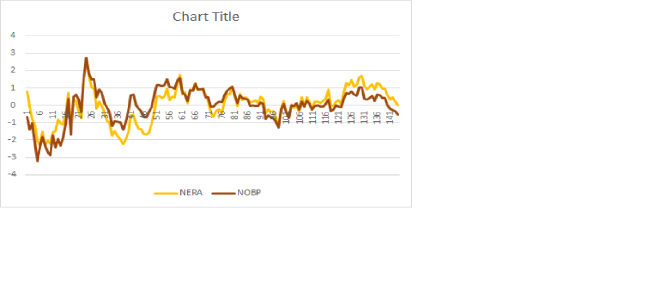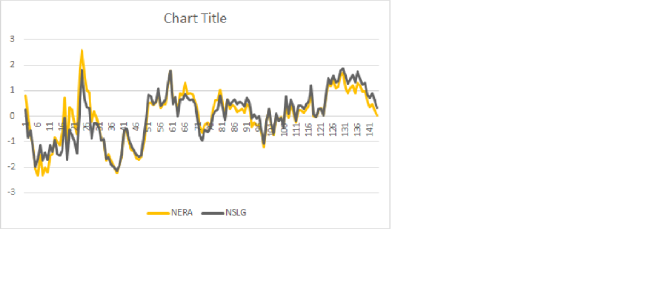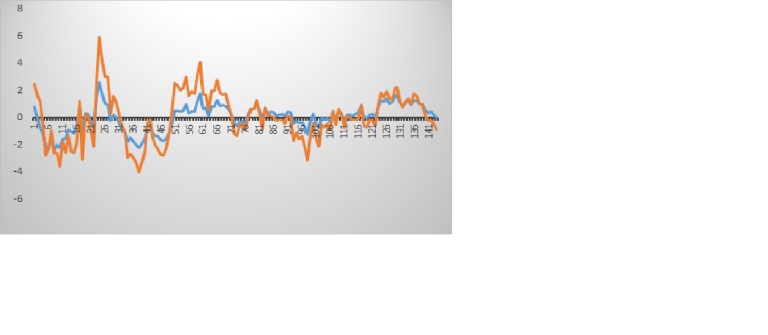I am trying to work on projects that I am not that good at, so that I could become a better Java programmer. So I decided to work on a GUI to create a loan calculator that determines how many months it would take to pay off a loan. What I built here is very basic and doesn’t look pretty as a GUI, but it works!
When it comes to building the GUI I wasn’t concerned with coding that part myself as I am not concerned with design, and I could just use the NetBeans GUI creator to do it for me. What I wanted practice doing was using inner classes and in using more algorithms. If you are a coder and are reading this feel free to leave comments on any improvements you can see.
package LoanCalc;
import java.awt.event.ActionEvent;
import java.awt.event.ActionListener;
import javax.swing.JButton;
import javax.swing.JFrame;
import javax.swing.JLabel;
import javax.swing.JPanel;
import javax.swing.JTextField;
public class Practice {
public static void main(String [] args){
BuildGUI gui = new BuildGUI();
gui.setDefaultCloseOperation(JFrame.EXIT_ON_CLOSE);
gui.setVisible(true);
}
}
class BuildGUI extends JFrame implements ActionListener{
private JLabel[] l;
private JTextField []t;
private JTextField k;
private JPanel p;
private JButton b;
private String []Labels={“Debt Type”, “Total Owed”, “Interest Rate”, “Monthly Payment”, “Total Months”};
public BuildGUI(){
t=new JTextField[5];
l=new JLabel[5];
p=new JPanel();
b=new JButton();
for(int i=0;i<Labels.length;i++){
t[i]=new JTextField(20);
l[i]=new JLabel(Labels[i]);
p.add(l[i]);
p.add( t[i] );
//t[i].addActionListener(this);
}
b.setText(“Calculate”);
k=new JTextField();
b.addActionListener(this);
javax.swing.GroupLayout jPanel1Layout = new javax.swing.GroupLayout(p);
p.setLayout(jPanel1Layout);
jPanel1Layout.setHorizontalGroup(
jPanel1Layout.createParallelGroup(javax.swing.GroupLayout.Alignment.LEADING)
.addGroup(javax.swing.GroupLayout.Alignment.TRAILING, jPanel1Layout.createSequentialGroup()
.addContainerGap(javax.swing.GroupLayout.DEFAULT_SIZE, Short.MAX_VALUE)
.addComponent(b)
.addGap(104, 104, 104))
.addGroup(jPanel1Layout.createSequentialGroup()
.addGap(18, 18, 18)
.addGroup(jPanel1Layout.createParallelGroup(javax.swing.GroupLayout.Alignment.LEADING)
.addGroup(jPanel1Layout.createSequentialGroup()
.addGap(28, 28, 28)
.addGroup(jPanel1Layout.createParallelGroup(javax.swing.GroupLayout.Alignment.TRAILING)
.addComponent(l[1])
.addComponent(l[0]))
.addGap(68, 68, 68)
.addGroup(jPanel1Layout.createParallelGroup(javax.swing.GroupLayout.Alignment.LEADING, false)
.addComponent(t[0], javax.swing.GroupLayout.DEFAULT_SIZE, 138, Short.MAX_VALUE)
.addComponent(t[1])))
.addGroup(jPanel1Layout.createSequentialGroup()
.addGroup(jPanel1Layout.createParallelGroup(javax.swing.GroupLayout.Alignment.LEADING)
.addGroup(jPanel1Layout.createParallelGroup(javax.swing.GroupLayout.Alignment.TRAILING)
.addComponent(l[2])
.addComponent(l[3]))
.addComponent(l[4]))
.addGap(40, 40, 40)
.addGroup(jPanel1Layout.createParallelGroup(javax.swing.GroupLayout.Alignment.LEADING)
.addComponent(t[4], javax.swing.GroupLayout.PREFERRED_SIZE, 139, javax.swing.GroupLayout.PREFERRED_SIZE)
.addComponent(t[2], javax.swing.GroupLayout.PREFERRED_SIZE, 139, javax.swing.GroupLayout.PREFERRED_SIZE)
.addComponent(t[3], javax.swing.GroupLayout.PREFERRED_SIZE, 138, javax.swing.GroupLayout.PREFERRED_SIZE))))
.addContainerGap(62, Short.MAX_VALUE))
);
jPanel1Layout.setVerticalGroup(
jPanel1Layout.createParallelGroup(javax.swing.GroupLayout.Alignment.LEADING)
.addGroup(jPanel1Layout.createSequentialGroup()
.addGroup(jPanel1Layout.createParallelGroup(javax.swing.GroupLayout.Alignment.LEADING)
.addGroup(jPanel1Layout.createSequentialGroup()
.addGap(18, 18, 18)
.addComponent(t[0], javax.swing.GroupLayout.PREFERRED_SIZE, javax.swing.GroupLayout.DEFAULT_SIZE, javax.swing.GroupLayout.PREFERRED_SIZE))
.addGroup(javax.swing.GroupLayout.Alignment.TRAILING, jPanel1Layout.createSequentialGroup()
.addContainerGap()
.addComponent(l[0])))
.addPreferredGap(javax.swing.LayoutStyle.ComponentPlacement.UNRELATED)
.addGroup(jPanel1Layout.createParallelGroup(javax.swing.GroupLayout.Alignment.LEADING)
.addComponent(l[1])
.addComponent(t[1], javax.swing.GroupLayout.PREFERRED_SIZE, 20, javax.swing.GroupLayout.PREFERRED_SIZE))
.addPreferredGap(javax.swing.LayoutStyle.ComponentPlacement.UNRELATED)
.addGroup(jPanel1Layout.createParallelGroup(javax.swing.GroupLayout.Alignment.BASELINE)
.addComponent(t[3], javax.swing.GroupLayout.PREFERRED_SIZE, javax.swing.GroupLayout.DEFAULT_SIZE, javax.swing.GroupLayout.PREFERRED_SIZE)
.addComponent(l[2]))
.addPreferredGap(javax.swing.LayoutStyle.ComponentPlacement.UNRELATED)
.addGroup(jPanel1Layout.createParallelGroup(javax.swing.GroupLayout.Alignment.LEADING)
.addComponent(t[2], javax.swing.GroupLayout.PREFERRED_SIZE, javax.swing.GroupLayout.DEFAULT_SIZE, javax.swing.GroupLayout.PREFERRED_SIZE)
.addComponent(l[3], javax.swing.GroupLayout.PREFERRED_SIZE, 20, javax.swing.GroupLayout.PREFERRED_SIZE))
.addGap(18, 18, 18)
.addComponent(b)
.addGap(18, 18, 18)
.addGroup(jPanel1Layout.createParallelGroup(javax.swing.GroupLayout.Alignment.BASELINE)
.addComponent(l[4])
.addComponent(t[4], javax.swing.GroupLayout.PREFERRED_SIZE, javax.swing.GroupLayout.DEFAULT_SIZE, javax.swing.GroupLayout.PREFERRED_SIZE))
.addContainerGap(91, Short.MAX_VALUE))
);
javax.swing.GroupLayout layout = new javax.swing.GroupLayout(getContentPane());
getContentPane().setLayout(layout);
layout.setHorizontalGroup(
layout.createParallelGroup(javax.swing.GroupLayout.Alignment.LEADING)
.addGroup(layout.createSequentialGroup()
.addComponent(p, javax.swing.GroupLayout.PREFERRED_SIZE, javax.swing.GroupLayout.DEFAULT_SIZE, javax.swing.GroupLayout.PREFERRED_SIZE)
.addGap(0, 67, Short.MAX_VALUE))
);
layout.setVerticalGroup(
layout.createParallelGroup(javax.swing.GroupLayout.Alignment.LEADING)
.addGroup(layout.createSequentialGroup()
.addContainerGap()
.addComponent(p, javax.swing.GroupLayout.PREFERRED_SIZE, javax.swing.GroupLayout.DEFAULT_SIZE, javax.swing.GroupLayout.PREFERRED_SIZE)
.addContainerGap(60, Short.MAX_VALUE))
);
pack();
}
//setting text fields to floats
String dt;
String to;
String mp;
String i;
float totalOwed;
float monthlyPayment;
float interest;
int months;
public void actionPerformed(ActionEvent e) {
// Execute when button is pressed
//System.out.println(“You clicked the button”);
dt = t[0].getText();
to = t[1].getText();
mp = t[2].getText();
i = t[3].getText();
totalOwed = Float.parseFloat(to);
monthlyPayment = Float.parseFloat(mp);
interest = Float.parseFloat(i);
while (totalOwed > 0){
//for loop simulates a year
for(int i=0; i<=11; i++){
//break from loop if paid off!
if (totalOwed <= 0){
break;
}
totalOwed -= monthlyPayment;
//counter for months
months ++;
}
//adding interest
totalOwed = totalOwed + (totalOwed*interest);
}
String monthTotal = Integer.toString(months);
t[4].setText(monthTotal);
}
}



